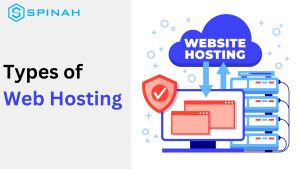As the world keeps embracing the digital shift, it has become increasingly important for businesses and private individuals to have a formidable and reliable web presence. However, with so many hosting options available, chances are that you don’t know which one is right for you. Well, you’re not alone.
Virtual Private Servers (VPS) is a powerful and flexible hosting solution that has become increasingly popular in recent years. But how does VPS work and how can it benefit your business? Read on.
We will share with you everything you need to know about VPS, including its benefits, how it works, and what to consider when choosing a VPS provider. Whether you are just starting out or looking to upgrade your current hosting solution, this comprehensive guide will transform your quest for digital presence.
What is Virtual Private Server (VPS)
A Virtual Private Server (VPS) is a virtualized environment that functions like a separate physical server. It is created by partitioning a single physical server into multiple virtual servers, each operating independently of the others.
Unlike shared hosting where multiple websites are housed on a single server, a VPS provides you with your own dedicated resources, including CPU, RAM, and storage space. In other words, VPS is designed to suit your personal needs and give you a substantial level of control.
What is a VPS or Virtual Private Server? – YouTube
How Does a Virtual Private Server Function?
Virtual Private Servers (VPS) work by partitioning a single physical server into multiple virtual servers, each operating independently of the others. This is accomplished using virtualization software which creates isolated environments for each VPS on the same physical server.
Each virtual server operates as its own independent machine with its own operating system, software, and resources such as CPU, RAM, and storage. This allows each VPS to function as a separate entity alongside its own IP address and root access.
The physical server is managed by the VPS provider who’s also responsible for ensuring that the hardware and underlying infrastructure are functioning properly. The provider also provides virtualization software which is used to create and manage virtual servers.
Once you have signed up for a VPS, you will receive access to a control panel through which you can configure and manage your server. This includes installing and updating software, creating backups, and setting up security measures. You will also be able to monitor your server’s performance and make changes to the configuration as needed.
Types of Virtual Private Server
There are several types of Virtual Private Server (VPS) hosting that are commonly offered by hosting providers. Here are some of the most common types:
Unmanaged VPS
With an unmanaged VPS, the hosting provider gives you access to a server and the necessary software, but you are responsible for setting up, configuring, and managing everything else, including the operating system, security, and applications.
Managed VPS
With a managed VPS, the hosting provider takes care of all the technical aspects of setting up and running the server, including security, backups, updates, and maintenance. This allows you to focus on your website or application without worrying about the technical details.
Cloud VPS
A cloud VPS is a VPS that is hosted on a cloud platform, such as Amazon Web Services, Microsoft Azure, or Google Cloud Platform. Cloud VPSs offer high levels of scalability and flexibility, as resources can be added or removed as needed.
Container-based VPS
A container-based VPS is a VPS that is built on top of a containerization platform, such as Docker. Container-based VPSs are often used for running multiple isolated applications on a single server, making them a popular choice for developers and companies with complex hosting needs.
Fully Managed VPS
A fully managed VPS is a type of managed VPS where the hosting provider takes care of all aspects of the server, including server configuration, software installation, security updates, backups, and maintenance. This is an ideal option for businesses or individuals who don’t have the technical expertise or time to manage their own VPS.
Virtual Private Server (VPS) and Other Web Hosting Types
Aside from Virtual Private Server (VPS) hosting, there is a vast selection of web hosting services available for you to choose from:
Shared Hosting
Shared hosting is a type of web hosting service where a single server is shared among multiple websites. This means that the server resources, such as CPU, RAM, and storage, are divided among the websites hosted on the same server. This makes shared hosting a cost-effective option for individuals and small businesses, as the cost of the server is spread among multiple users.
Shared hosting is suitable for small, personal websites or blogs that don’t receive a lot of traffic. This is because these types of websites typically have low resource requirements and don’t need a lot of bandwidth or storage space. With shared hosting, you can easily set up a simple website or blog without needing any technical expertise or experience in server administration.
The hosting company takes care of all the technical details, such as server maintenance, security updates, and backups, freeing up time and resources for you to focus on creating and managing your website or blog. Most shared hosting providers offer a control panel that makes it easy to manage your website and domain names, as well as access to support and documentation.
Dedicated Server Hosting
Dedicated server hosting is a type of web hosting service where an entire server is dedicated to serving a single website. This means that the server resources, such as CPU, RAM, and storage, are dedicated exclusively to your website, giving you complete control over your hosting environment and ensuring that your website has access to the resources it needs to perform well.
Dedicated server hosting is the most expensive option among the different types of web hosting services, but it also offers the most control, resources, and performance. This makes it a good choice for large websites and online businesses that receive a high amount of traffic and have demanding resource requirements.
With dedicated server hosting, you have complete control over your server, including the ability to install custom software, configure the server to meet your specific needs, and control security settings. This level of control and flexibility is particularly important for businesses that require a high level of security, such as e-commerce sites or sites that store sensitive data.
Cloud Hosting
Cloud hosting is a modern approach to hosting websites and applications that has gained popularity in recent years. Unlike traditional hosting methods that rely on a single physical server, cloud hosting utilizes a network of interconnected servers that are located in data centers across the world. This network of servers is known as the “cloud.”
One of the main advantages of cloud hosting is its flexibility. With cloud hosting, you have the ability to easily scale your resources up or down as needed, without having to worry about the limitations of a single physical server. This means that you can quickly and easily add more storage, processing power, or memory to your website or application as your traffic grows.
Managed Hosting
Managed hosting is a hosting service where a hosting company takes responsibility for managing and maintaining the server infrastructure and network required for running a website or application. In a managed hosting environment, the hosting company handles all the technical aspects of hosting such as hardware and software updates, security monitoring, and backup management, allowing the website or application owner to focus on their core business activities.
Managed hosting provides several benefits to businesses and organizations that don’t have the technical expertise or resources to manage their own hosting environment.
First, it frees up their time and resources, enabling them to focus on their core business activities such as developing their products or services, marketing, and customer service. It provides a higher level of security and reliability compared to unmanaged hosting.
Hosting companies that provide managed hosting services employ skilled professionals who are knowledgeable in server and network management, ensuring that your website or application is secure and available 24/7.
Reseller Hosting
Reseller hosting is a type of hosting that allows you to become a hosting provider yourself. With reseller hosting, you can use a portion of a shared or dedicated server to host websites for your own clients. This means that you can offer hosting services to your own customers without having to invest in expensive server hardware, software, and maintenance.
The reseller hosting provider typically provides you with a control panel that allows you to create and manage hosting accounts for your clients. You can choose to customize these accounts by setting up different pricing plans, features, and resources. This allows you to offer your clients a range of hosting options that cater to their specific needs and budgets.
Benefits of Using VPS for Businesses
Here are some of the benefits of using a VPS for businesses:
Scalability
A VPS can be easily scaled up or down as the needs of the business change. This means that businesses can add or remove resources such as CPU, RAM, and storage to their VPS depending on the traffic their website or application receives. This allows businesses to only pay for the resources they need, which can help them save money on hosting costs.
Security
A VPS provides a higher level of security compared to shared hosting. With a VPS, each user is isolated from other users on the server, which means that if one website is compromised, it will not affect the others. Additionally, businesses can customize their VPS security settings to meet their specific needs such as configuring firewalls and setting up access controls.
Performance
A VPS provides dedicated resources to the user, which means that the performance of their website or application is not affected by the traffic or resource usage of other users on the server. This can help businesses ensure that their website or application is running smoothly and quickly, which can improve the user experience and lead to increased engagement.
Control
With a VPS, businesses have more control over their hosting environment compared to shared hosting. They can install and configure their own software, access the server via a command-line interface, and perform tasks such as backups and updates without relying on the hosting provider.
Cost-effective
While a VPS is more expensive than shared hosting, it is generally more cost-effective than dedicated hosting. Businesses can benefit from dedicated resources without the high costs associated with managing their own server hardware.
Setting Up a Virtual Private Server
Setting up a virtual private server (VPS) can seem intimidating, but it’s actually a relatively straightforward process. Here’s a general guide to setting up a VPS:
Choose a VPS Provider
First, you’ll need to choose a VPS provider. Consider the factors outlined in my previous response to choose the right provider for your needs.
Here are some examples of popular VPS providers:
DigitalOcean
DigitalOcean is a cloud computing platform that has gained popularity due to its simplicity, affordability, and user-friendly interface. It was founded in 2011 with the goal of making cloud computing more accessible to developers and businesses of all sizes. The company offers a range of services, including virtual private servers, cloud storage, and load balancers.
One of the main reasons why DigitalOcean is so popular is because of its easy-to-use interface. The platform is designed to be user-friendly, with simple and intuitive controls that make it easy for even novice users to get started with cloud computing.
Additionally, DigitalOcean offers a wealth of helpful resources, including tutorials, documentation, and a large community of users who are always willing to help out.
Linode
Linode is a cloud hosting provider that offers high-performance virtual private server (VPS) hosting with fast SSD storage, a user-friendly control panel, and 24/7 customer support. The company was founded in 2003 and has since grown to become one of the most popular cloud hosting providers in the world.
One of the key advantages of Linode is its high-performance VPS hosting. The company uses modern hardware and fast SSD storage to ensure that websites and applications hosted on its platform load quickly and respond fast to user requests. This means that users can enjoy a smooth and responsive experience, even when their websites or applications are experiencing high levels of traffic.
Linode also offers a user-friendly control panel that makes it easy for users to manage their VPS hosting. The control panel allows users to easily monitor their resources, manage their servers, and access a range of powerful tools and features.
Amazon Web Services (AWS)
Amazon Web Services offers a range of cloud computing services, including VPS hosting. It offers a variety of plans with flexible pricing and allows users to easily scale up or down as needed. It also provides a range of other services, such as storage, database management, and application deployment.
Google Cloud Platform
Google Cloud Platform (GCP) is a cloud computing platform that offers a range of services, including virtual private server (VPS) hosting. GCP was launched by Google in 2011 and has since grown to become one of the most popular cloud computing platforms in the world.
One of the key advantages of GCP is its flexible pricing options. The platform offers a range of pricing models, including pay-as-you-go, sustained-use discounts, and custom pricing. This means that users can choose the pricing model that best suits their needs and budget, and they only pay for the resources they use.
GCP also offers a range of tools and services to help users manage and scale their VPS. The platform provides a comprehensive set of APIs, command-line tools, and web-based consoles that allow users to manage their infrastructure, monitor their resources, and automate their deployments.
Choose a Plan
Once you’ve selected a provider, choose the VPS plan that best suits your needs. Plans will vary in terms of storage, memory, CPU, and bandwidth. You can usually upgrade or downgrade your plan later if needed.
Choose an Operating System
Next, you’ll need to choose an operating system (OS) for your VPS. The most popular options are Linux distributions, such as Ubuntu or CentOS, but Windows is also an option.
Configure the Server
After choosing an OS, you’ll need to configure your server. This involves setting up security measures, creating user accounts, and installing any necessary software.
Connect to the VPS
Once your VPS is set up, you can connect to it via SSH (Secure Shell) using an SSH client like PuTTY. This will allow you to log in and start configuring your server.
Install Software and Configure Services
With your VPS set up and connected to, you can install any necessary software and configure the services you need. This might include a web server like Apache or Nginx, a database like MySQL or PostgreSQL, or other software for your specific needs.
Test your VPS
Once you’ve set up your VPS and installed the necessary software and services, you’ll want to test it to ensure everything is working properly. You can test the server’s performance, security, and connectivity using various tools.
Setting up a VPS can take some time, but it’s a great way to get a reliable, high-performance hosting environment for your website or application. And once your VPS is up and running, you’ll have complete control over your hosting environment, allowing you to customize it to meet your specific needs.
Best Practices for Virtual Private Servers Maintenance and Management
Maintaining and managing a virtual private server (VPS) is essential to ensure its optimal performance and security.
Here are some best practices for VPS maintenance and management:
Regular Software Updates:
Regular software updates are a crucial aspect of VPS maintenance and management. Keeping the operating system and software up to date with the latest security patches and bug fixes ensures optimal performance and security.
Software vulnerabilities and bugs are frequently discovered, and attackers are always looking for ways to exploit them. To mitigate the risk of cyber threats, VPS owners must apply software updates promptly.
Most software updates contain patches that address known security issues and bugs, improving the performance and stability of the system.
Monitoring
Use a monitoring tool to keep track of your VPS resources, such as CPU and memory usage, disk space, and network traffic. This can help you identify potential issues and take preventive measures before they cause any problems.
Backups
Backups are an essential part of VPS maintenance and management. Regular backups of VPS data ensure that critical data is not lost in the event of a hardware failure, data corruption, or cyber-attack.
VPS owners can use a variety of backup tools or cloud-based backup services to create backups of their data. Some VPS providers may offer automated backup services as part of their hosting packages, while others may require VPS owners to set up backup services themselves.
Security
Implement security measures to protect your VPS from cyber threats.
This can include using firewalls, configuring secure remote access, and implementing encryption.
Resource Optimization
Optimizing your VPS resources is essential to ensure optimal performance and cost-efficiency. One of the key steps you can take to optimize your VPS is to disable unnecessary services. This can help to reduce the amount of resources your VPS is using, and can improve the overall performance of your server.
Another important step is to remove unused applications. When you first set up your VPS, you may have installed a number of applications that you no longer need. Removing these applications can free up valuable disk space and memory and can help to improve the overall performance of your server.
Performance Tuning
Performance tuning is a crucial aspect of VPS maintenance and management. Regularly tuning your VPS can help you optimize its performance, which in turn can lead to faster response times, improved reliability, and a better user experience for your visitors or customers.
One important aspect of performance tuning is configuring caching. Caching is the process of storing frequently accessed data in memory or on disk, which can significantly reduce the time it takes for your VPS to serve content to visitors. This can include configuring a content delivery network (CDN) or using server-side caching tools like Varnish or Memcached.
Regular Health Checks
Perform regular health checks on your VPS to identify any potential issues or bottlenecks. This can include running system checks, analyzing log files, and running performance tests.
Troubleshooting Common Issues with Virtual Private Servers
Here are some common issues that you may encounter with VPS hosting, along with some troubleshooting tips to help you resolve them:
Connectivity issues
If you’re having trouble connecting to your VPS, the first step is to check your network settings and firewall rules. Make sure that your VPS is configured to allow incoming connections on the ports that your applications use and that your firewall isn’t blocking any necessary traffic.
You may also want to check that your network settings are configured correctly and that your VPS is accessible from the internet.
Performance issues
If your VPS is running slow or is unresponsive, there are several possible causes. First, check that your server isn’t running out of resources like RAM or CPU. If your server is under heavy load, consider upgrading your VPS plan or optimizing your applications to use fewer resources.
You may also want to check that your web server and database are properly configured for optimal performance.
Security Issues
VPS hosting can be vulnerable to various security threats, including malware, phishing attacks, and unauthorized access. To ensure the security of your VPS, make sure that you keep your software and operating system up to date with security patches and regularly scan for vulnerabilities. You may also want to consider using a firewall or security software to protect your VPS from external threats.
Application Issues
If your applications aren’t working as expected on your VPS, there may be a problem with your application configuration or installation. Check that your application is installed correctly and that any required dependencies are installed. You may also want to check that your application settings are configured correctly and that any necessary permissions are set.
Server Errors
If you encounter server errors, such as 500 or 404 errors, there may be an issue with your server configuration or application code. Check your server logs for any error messages that can help identify the problem. You may also want to consult with your web developer or system administrator to help troubleshoot the issue.
Wrapping Up
Virtual Private Serveors (VPS) offer businesses a reliable and secure hosting environment with dedicated resources. VPS are more cost-effective than dedicated hosting, while still providing the same level of control and performance as shared hosting.
Setting up a VPS is relatively straightforward, but it’s important to ensure that you choose the right provider for your needs and configure your server correctly. In addition, regular maintenance and management will help keep your VPS running smoothly and securely.
With these best practices in place, you can be sure that your website or application is hosted on an optimal platform that meets all of its requirements.











